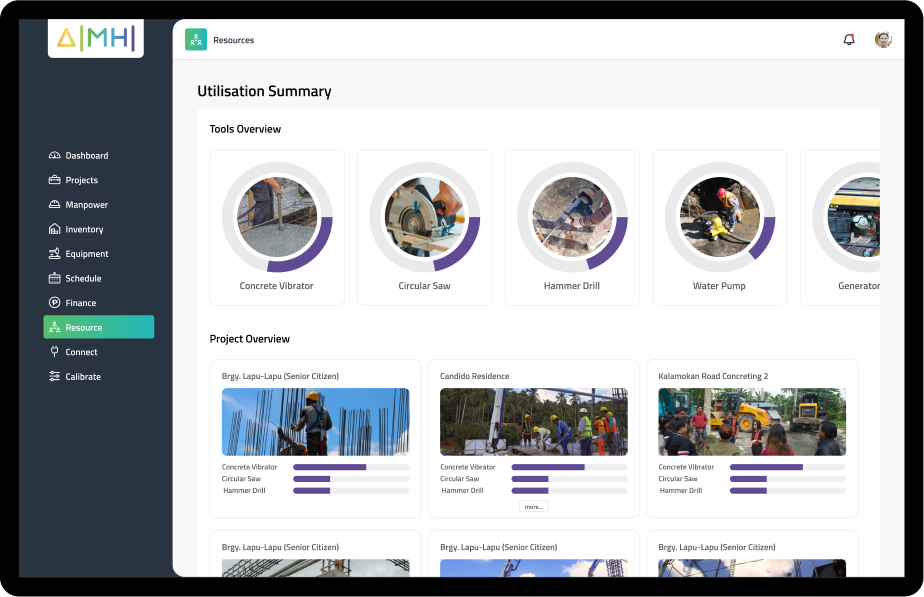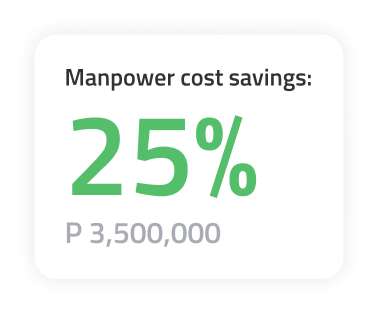The construction industry is at a turning point where adopting technology is becoming essential. While many industries have already embraced digital tools, construction has been slower to change due to misconceptions about technological adoption. Resistance to change usually happens in the beginning when unsure how to start.
However, technology is quickly reshaping the way projects are managed, making them more efficient and user-friendly. Tools like cloud-based, Building Information Modeling (BIM), and AI-driven platforms can significantly improve the way construction teams collaborate. Embracing these technologies can help companies stay competitive and improve project outcomes.
In this article, we’ll discuss simple ways how to start using technology in construction, and the need for project management construction software.
Understanding the Need for Technology in Construction
The first step in making informed decisions about which tools can benefit your projects and business is understanding the advantages and challenges of using technology.
The construction industry is facing increasing demands for faster, more efficient, and sustainable building practices. It is expected to grow by 3.3% in 2024, with a strong focus on sustainability and innovation, especially in areas like green construction and smart infrastructure.
Traditional methods often lead to delays, cost overruns, and miscommunication, making it difficult for projects to stay on track. This is where technology can offer solutions that streamline operations and improve overall project management.
AI in construction offers several key benefits, including:
- Cost Reduction: AI-driven tools help predict outcomes, minimize errors, reduce material waste, and optimize resource use, leading to lower overall costs.
- Time Efficiency: Automation and real-time communication platforms enable faster decision-making and keep projects on schedule.
- Enhanced Collaboration: Cloud-based software allows all stakeholders to access and update project information in real-time, improving teamwork and transparency.
- Green Construction: Smart technology can help monitor energy consumption and reduce waste and even suggest sustainable building materials and eco-friendly construction practices.
Despite these benefits, many construction companies are still hesitant to adopt new technologies. Common barriers include the lack of the necessary skills to implement and manage new tools effectively.
Let’s dive into easy but effective steps on how to start your journey towards digitalization.
How to Start – Simple Steps Toward Digital Adoption
For construction companies looking to embrace technology, the process can seem daunting, but starting small and focusing on specific areas of improvement can make the transition smoother. Here are a few actionable steps to begin the journey toward digital adoption.
1. Start with Digital Project Management Software
One of the easiest ways to integrate technology into construction is by using digital project management software. Tools like AIMHI help teams organize tasks, monitor progress, and ensure effective communication. These platforms provide real-time updates, allowing managers and workers to stay on the same page, regardless of their location.
This software is designed to be intuitive and user-friendly, allowing every member of a team to navigate the platform easily.
Whether a small or large-scale business, there’s a specific tier that can cater to your needs. AIMHI starts at less than ₱2,000 for the basic tier, best for smaller-scale construction operations.
2. Use Cloud-Based Collaboration Platforms
Cloud technology allows multiple team members to access the same documents, blueprints, or project updates, no matter where they are. This helps reduce the risk of errors due to outdated information, improves document management, and enhances team communication.
Tools like Google Sheets or Microsoft Excel are easy to implement but they lack the specialized features designed for construction projects. To truly unlock the potential of cloud-based collaboration in construction, companies should consider more advanced platforms tailored to the industry. This includes AI integration to the cloud to improve collaboration, decision-making, and project efficiency.
For instance, AIMHI centralizes all project-related documents and data in the cloud, allowing team members to access real-time updates from multiple devices, ensuring that everyone is working with the latest information. It also offers features the following tools to significantly reduce paperwork, prevent delays, and streamline project management:
- Predictive risk assessment
- Workflow optimization
- Real-time collaboration
3. Leverage Multi-Device Accessibility for Real-Time Updates
Construction is a mobile industry, and having a mobile option offers site managers and workers the ability to track progress, report issues, and communicate in real-time.
Use construction project management software like AIMHI where you can access data via multiple devices, including laptops, desktops, and tablets. This provides some level of flexibility, allowing project management on the go.
4. Focus on Training and Support
Introducing new tools requires proper training to ensure teams are comfortable with the technology. Start with user-friendly platforms and provide ongoing support to help staff adapt. Many software companies offer training sessions and customer support to make the transition smoother. When subscribing to third-party project management software like AIMHI, you can contact their team and have any support you can get not just in setting up.
By starting with these simple, practical steps, construction companies can begin to reap the benefits of digital transformation without overwhelming their teams.
2 Key Technologies in Construction
As construction companies become more familiar with basic digital tools, they can explore advanced technologies that can dramatically improve project efficiency and outcomes. Here are two key innovations transforming the construction industry.
1. Building Information Modeling (BIM)
BIM is a revolutionary tool that allows construction teams to create and manage digital representations of a building’s physical and functional characteristics. It’s much more than a 3D model—it provides detailed information about materials, timelines, and costs, and it allows for better collaboration between architects, engineers, and construction teams.
Pros:
- Improved Collaboration: Teams can work on the same model in real-time, reducing miscommunication.
- Better Visualization: 3D models provide clear insights for decision-making before construction begins.
- Cost & Time Savings: Accurate estimations and clash detection minimize rework and delays.
- Sustainability: BIM helps optimize material use and energy performance, supporting green building practices.
- Lifecycle Management: It aids in managing the building’s full lifecycle from design to maintenance.
Cons:
- High Initial Costs: Investment in software, hardware, and training can be expensive.
- Learning Curve: Requires time and training to master.
- Data Overload: Managing large amounts of information can be challenging.
- Legal Issues: Data ownership and liability need clear agreements.
- Software Compatibility: Different platforms may not integrate seamlessly.
2. AI in Construction – AIMHI
Artificial Intelligence (AI) is increasingly being used to automate tasks and analyze vast amounts of data. In construction, AI tools can predict potential project risks, optimize schedules, and even provide insights on how to improve efficiency on job sites. The ultimate goal of using this software? Increasing profits.
Adopting these game-changing technologies will allow construction companies to take their projects to the next level, leading to better accuracy, cost savings, and improved safety.
Conclusion
Technology is transforming the construction industry, and companies that embrace digital tools stand to gain significant advantages. Starting with simple project management software and moving toward advanced technologies like BIM and AI can help improve efficiency, reduce costs, and enhance collaboration. While the challenges of adoption—such as resistance to change and initial costs—are real, the long-term benefits far outweigh the hurdles.
For construction companies, taking the first step toward digital adoption is crucial for staying competitive in an evolving industry. By embracing innovation, firms can streamline operations, improve project outcomes, and position themselves for future success. Start exploring one new digital tool today to enhance your next project with AIMHI. Learn more about the benefits: https://aimhi.ai/why-aimhi/.









